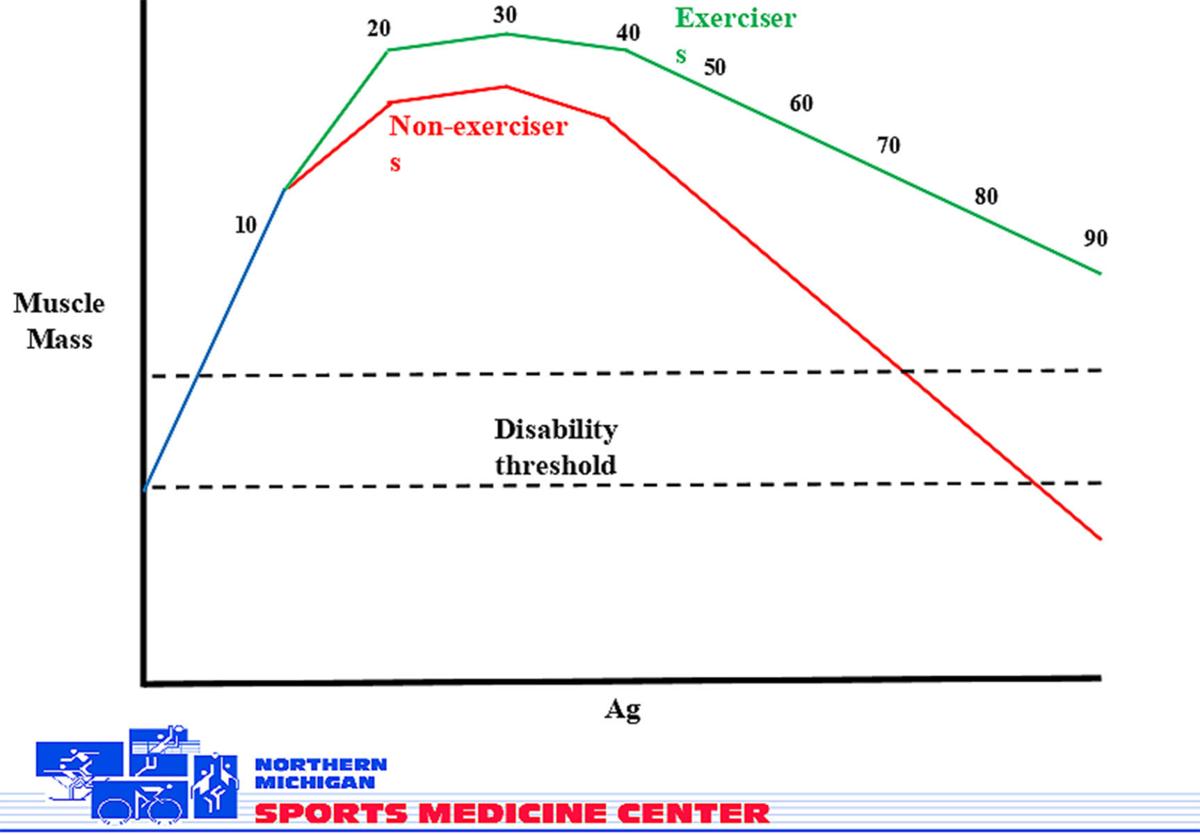Over the past few months, I’ve been asked by several patients what they can do to maintain their independence as they age.
I think this concern has become more common as baby boomers are both caring for aging parents and crossing the threshold into their 70s themselves.
Their concern is a valid one. About 5 percent of people over 65 live in long-term care facilities. By the age of 85, that number increases to 35 percent.
While there are multiple factors which contribute to whether or not you will need some level of living assistance as you age, muscle mass is among the most important.
People with more muscle mass fall less often, have better bone density and generally report increased satisfaction with how well they function day to day.
To learn more about how muscle mass relates to the aging process, I spoke with Dr. Todd Sheperd of Bayside Family Medicine.
Dr. Sheperd is a family practice physician and is fellowship trained in sports medicine.
In what way is muscle mass and overall strength associated with disability in adults over 65?
Dr. Sheperd: “As patients age, there are changes associated with decreased muscle mass and strength. Some of these changes occur as a result of being less active (we grow old because we stop playing; we don’t stop playing because we grow old). Patients over 65 are also more likely to have medical conditions and medications which increase the risk of falling and have injury related to falls. All of the major medical societies recommend evaluating a patient’s fall risk because there are many potential treatments which may lower the risk of injury and improve patient’s function and mobility. This screening may include testing a patient’s strength and balance.”
What are some of the benefits of strength training beyond the age of 65?
Dr. Sheperd: “Improved strength, quality of sleep, mobility, quality of life, improved bone density.”
How soon might someone see the benefits of a conditioning program?
Dr. Sheperd: “Within 2-4 weeks”.
For beginners, what is good goal with respect to exercise and duration and frequency to get started?
Dr. Sheperd: “Most studies suggest a goal of three times per week for 30-45 minutes will improve important outcomes. Some smaller studies suggest that even more intense exercise may improve patient function but this level of intensity should be cleared by a medical provider and be performed under the direction of professional therapists and exercise specialists to reduce the risk of injury.”
Which diseases or conditions seen in your practice seem to be helped the most by regular exercise?
Dr. Sheperd: “Chronic medical conditions which are consistently improved with exercise include high blood sugar and high blood pressure as well as obesity may be well treated with regular exercise. In addition, patients with heart disease also have significant benefit from aerobic exercise. Strength training and balance exercises (like Tai Chi) also benefit bone strength and balance and when done regularly, improve fall risk.”
After age 30, your muscle mass decreases as much as 3 percent to 5 percent per decade, and most people will lose 20-30 percent of their muscle mass during their lifetimes. Fortunately, there are steps that can be taken to attenuate this loss.
It’s never too late
Because of the way humans were designed, we don’t lose the potential to get stronger, it just gets a little more difficult as we age. That being said, if you’ve never exercised or it has been a few years since you were active, its best to have some professional guidance. After checking with your doctor to make sure exercise is safe, talk to your physical therapist about designing a program tailored to your needs.
Avoid an iron-deficient workout
While cardiovascular conditioning is beneficial, it won’t help develop/maintain muscle mass and bone density as well as lifting weights. According to the American Journal of Preventative Medicine, 2-3 strength training sessions per week has been show to dramatically improve numerous physiologic markers that tend to decline with aging.
Find a friend
Maintaining an active social life has been found to correlate with longevity and independence. Working out with a friend can also help you be more accountable in sticking with your program. It might even be helpful to find someone younger than you to be sure you’re always putting forth a little extra effort.
Jeff Samyn is a physical therapist, board-certified orthopedic clinical specialist, and certified strength and conditioning specialist at Northern Michigan Sports Medicine Center in Petoskey. He may be reached via e-mail at jsamyn@nmsportsmed.com. This information is not to be considered medical advice and is not intended to replace consultation with a qualified medical professional.







